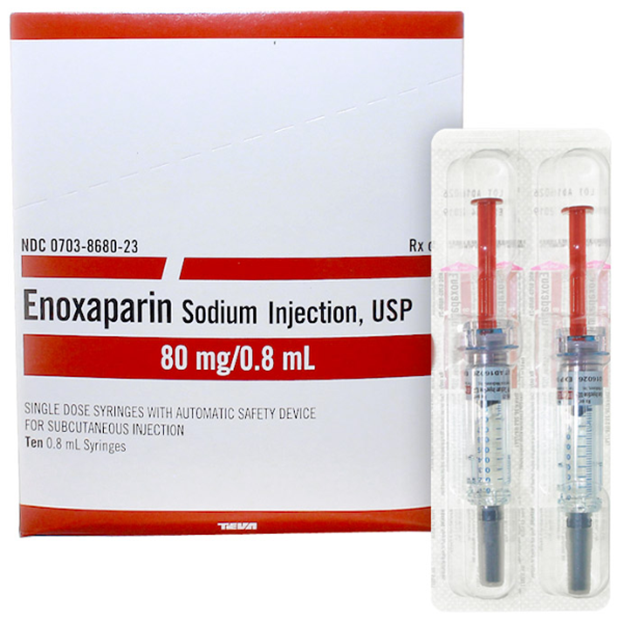To prevent deep vein thromboses following knee replacement surgery, an adult male client is receiving daily subcutaneous enoxaparin. Which laboratory result requires immediate action by the nurse?
Reference Range:
Hematocrit [42% to 52% (0.42 to 0.52 volume fraction)]
Platelets [150,000 to 400,000/mm² (150 to 400 × 10^9/L)]
Creatinine [0.5 to 1.1 mg/dL (44 to 97 μmol/L)]
Blood Urea Nitrogen (BUN) [10 to 20 mg/dL (3.6 to 7.1 mmol/L)]
Platelet count of 100,000/mm³ (100 x 10^9/L).
Hematocrit 45% (0.45 volume fraction).
Blood urea nitrogen (BUN) 20 mg/dL (7.1 mmol/L).
Serum creatinine 1.0 mg/dL (88.4 μmol/L).
The Correct Answer is A
Choice A reason: Platelet count of 100,000/mm³ (100 x 10^9/L) is below the normal range and indicates thrombocytopenia, which is a decrease in the number of platelets in the blood. Thrombocytopenia can increase the risk of bleeding and bruising, and can be a serious adverse effect of enoxaparin. This laboratory result requires immediate action by the nurse, such as notifying the prescriber, monitoring for signs of bleeding, and withholding the next dose of enoxaparin.
Choice B reason: Hematocrit 45% (0.45 volume fraction) is within the normal range and does not indicate any problem with the client's red blood cells or oxygen-carrying capacity.
Choice C reason: Blood urea nitrogen (BUN) 20 mg/dL (7.1 mmol/L) is within the normal range and does not indicate any problem with the client's kidney function or hydration status.
Choice D reason: Serum creatinine 1.0 mg/dL (88.4 μmol/L) is within the normal range and does not indicate any problem with the client's kidney function or muscle metabolism.
Nursing Test Bank
Naxlex Comprehensive Predictor Exams
Related Questions
Correct Answer is ["0.8"]
Explanation
The correct answer is 0.8 mL.
To find the answer, we can use the following formula:
(mg of medication ordered / mg of medication per mL) = mL to administer
Substituting the values from the question, we get:
(80 mg / 60 mg per 0.6 mL) = 0.8 mL
Therefore, the nurse should administer 0.8 mL of enoxaparin sodium injection.

Correct Answer is D
Explanation
Choice A reason: Trouble sleeping is not a relevant information for administering pyridostigmine, which is a cholinesterase inhibitor that improves muscle strength and function in patients with myasthenia gravis. Trouble sleeping may be caused by other factors, such as stress, pain, or medication side effects.
Choice B reason: Difficulty with urination is not a pertinent information for administering pyridostigmine, which does not affect urinary function or bladder control. Difficulty with urination may indicate a urinary tract infection, prostate enlargement, or kidney stones.
Choice C reason: Unexplained weight loss is not a significant information for administering pyridostigmine, which does not affect metabolism or appetite. Unexplained weight loss may be a sign of an underlying condition, such as hyperthyroidism, diabetes, or cancer.
Choice D reason: Recent oral intake is the correct information for administering pyridostigmine, which should be taken on an empty stomach or before meals to enhance its absorption and effectiveness. Pyridostigmine can also help prevent or reduce dysphagia (difficulty swallowing), which is a common symptom of myasthenia gravis.
Whether you are a student looking to ace your exams or a practicing nurse seeking to enhance your expertise , our nursing education contents will empower you with the confidence and competence to make a difference in the lives of patients and become a respected leader in the healthcare field.
Visit Naxlex, invest in your future and unlock endless possibilities with our unparalleled nursing education contents today
Report Wrong Answer on the Current Question
Do you disagree with the answer? If yes, what is your expected answer? Explain.
Kindly be descriptive with the issue you are facing.
